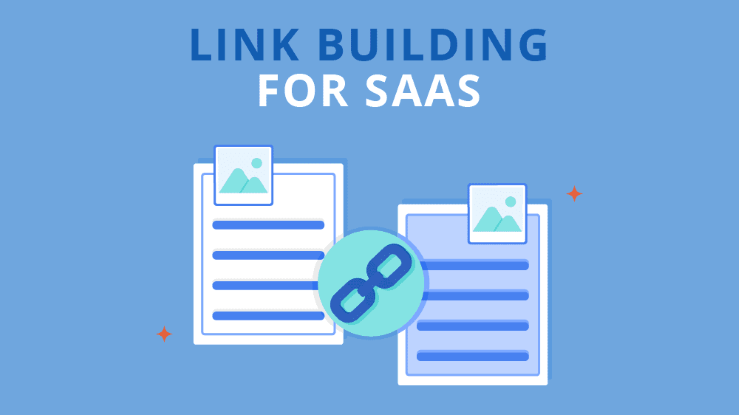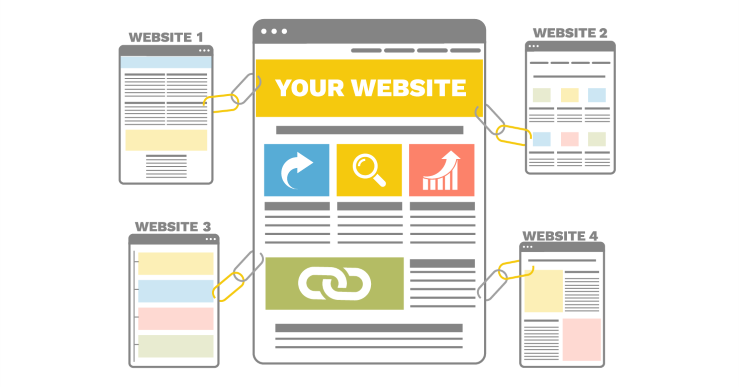SEOStrategy
An Essential Guide To SaaS Link Building (+Examples)
Link building is a crucial component of any successful SaaS (Software as a Service) marketing strategy. In this comprehensive guide, we’ll delve into the key strategies and provide real-world examples to help SaaS companies build a strong backlink profile and enhance their online presence.
1. Create High-Quality, Educational Content:
Example: Develop in-depth blog posts, case studies, and whitepapers that offer valuable insights into industry trends, best practices, and solutions.
2. Leverage SaaS Directories and Review Sites:
Example: List your SaaS product on reputable directories like Capterra, G2, and SoftwareAdvice, and encourage satisfied customers to leave positive reviews.
3. Guest Post on Industry-Relevant Blogs:
Example: Write guest articles for prominent SaaS blogs, sharing your expertise and providing actionable tips for readers.
4. Collaborate with Influencers and Thought Leaders:
Example: Partner with influencers in the SaaS space for webinars, podcasts, or co-authored content, and earn valuable backlinks from their platforms.
5. Participate in Industry Events and Webinars:
– Example: Host webinars or workshops showcasing your SaaS solution, and promote them through industry-related platforms for increased exposure.
6. Utilize Data-Driven Content for Authority:
Example: Conduct surveys or research studies in your industry, and publish data-driven reports that attract links from other businesses, bloggers, and journalists.
7. Create Engaging Infographics and Visual Content:
Example: Design visually appealing infographics that simplify complex concepts related to your SaaS product, making them highly shareable and link-worthy.
8. Develop Comprehensive User Guides and Tutorials:
Example: Craft detailed user guides, video tutorials, or how-to articles that demonstrate the full potential and functionalities of your SaaS solution.
9. Engage in Strategic PR and Outreach:
Example: Send press releases about significant product updates, partnerships, or achievements to industry-specific media outlets for potential coverage and backlinks.
10. Monitor Brand Mentions and Request Backlinks:
Example: Use tools to monitor brand mentions and reach out to websites that mention your SaaS product without linking, asking for proper attribution.
11. Share Valuable Insights on Social Media:
Example: Share industry insights, tips, and informative content on your social media channels, driving traffic and potential backlinks from engaged followers.
12. Collaborate with Complementary SaaS Solutions:
Example: Partner with complementary SaaS products for co-marketing initiatives, such as joint webinars or co-authored blog posts, resulting in mutual backlinks.
Conclusion:
By implementing these proven strategies and leveraging real-world examples, SaaS companies can establish a robust link-building foundation that not only boosts SEO but also strengthens their authority and credibility within the industry. Remember, consistency and quality are key to building a sustainable backlink profile for long-term success.
How to create a link building strategy
Creating an effective link-building strategy is essential for improving your website’s authority and search engine rankings. Here are steps to help you create a successful link-building strategy:
1. Set Clear Goals and Objectives:
Determine what you want to achieve with your link-building efforts. Whether it’s increasing organic traffic, improving search rankings, or boosting brand visibility, having clear goals will guide your strategy.
2. Understand Your Target Audience:
Identify your target audience and their interests. This knowledge will help you create content that resonates with them and attracts natural backlinks.
3. Conduct Competitor Analysis:
Analyze your competitors’ backlink profiles to identify potential link opportunities. Look for authoritative websites linking to them and explore if you can acquire similar links.
4. Create High-Quality, Relevant Content:
Develop compelling content that provides value to your audience. Quality content is more likely to attract natural backlinks from other websites.
5. Keyword Research:
Identify relevant keywords for your industry or niche. Incorporate these keywords naturally into your content to increase its visibility in search results.
6. Optimize On-Page SEO:
Ensure that your website’s on-page SEO is strong. This includes optimizing meta tags, headings, and image alt attributes to make your content more search engine-friendly.
7. Build Relationships with Influencers and Industry Experts:
Connect with influencers and experts in your industry. Collaborations can lead to natural backlinks when they share or reference your content.
8. Guest Posting:
Write high-quality guest posts for reputable websites within your niche. Include a link back to your website in the author bio or within the content (if relevant).
9. Utilize Social Media and Online Communities:
Share your content on social media platforms and participate in online communities relevant to your industry. This can lead to natural sharing and backlinking.
10. Outreach and Relationship Building:
Reach out to relevant websites, blogs, and influencers for potential link opportunities. Personalized outreach can lead to valuable backlinks.
11. Monitor Backlinks and Disavow Spammy Links:
Regularly monitor your backlink profile using tools like Google Search Console. Disavow any low-quality or spammy backlinks that could harm your site’s reputation.
12. Measure and Analyze Performance:
Track the performance of your link-building efforts. Monitor metrics like organic traffic, search rankings, and the number of acquired backlinks to assess the impact of your strategy.
13. Adapt and Refine Your Strategy:
Stay updated with industry trends and search engine algorithms. Adjust your link-building strategy as needed to ensure it remains effective over time.
Remember, patience is key in link building. Building high-quality backlinks takes time, but the long-term benefits for your website’s authority and search visibility are worth the effort.






